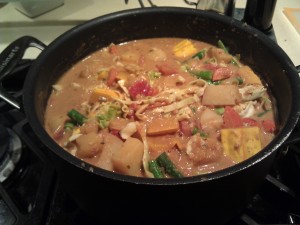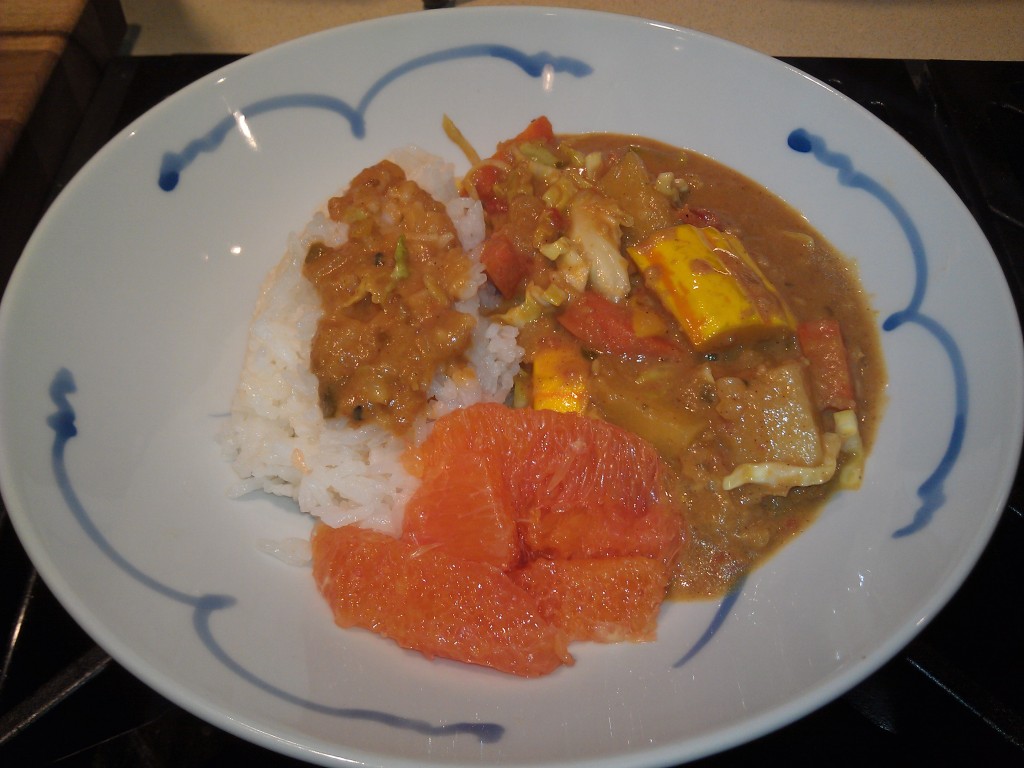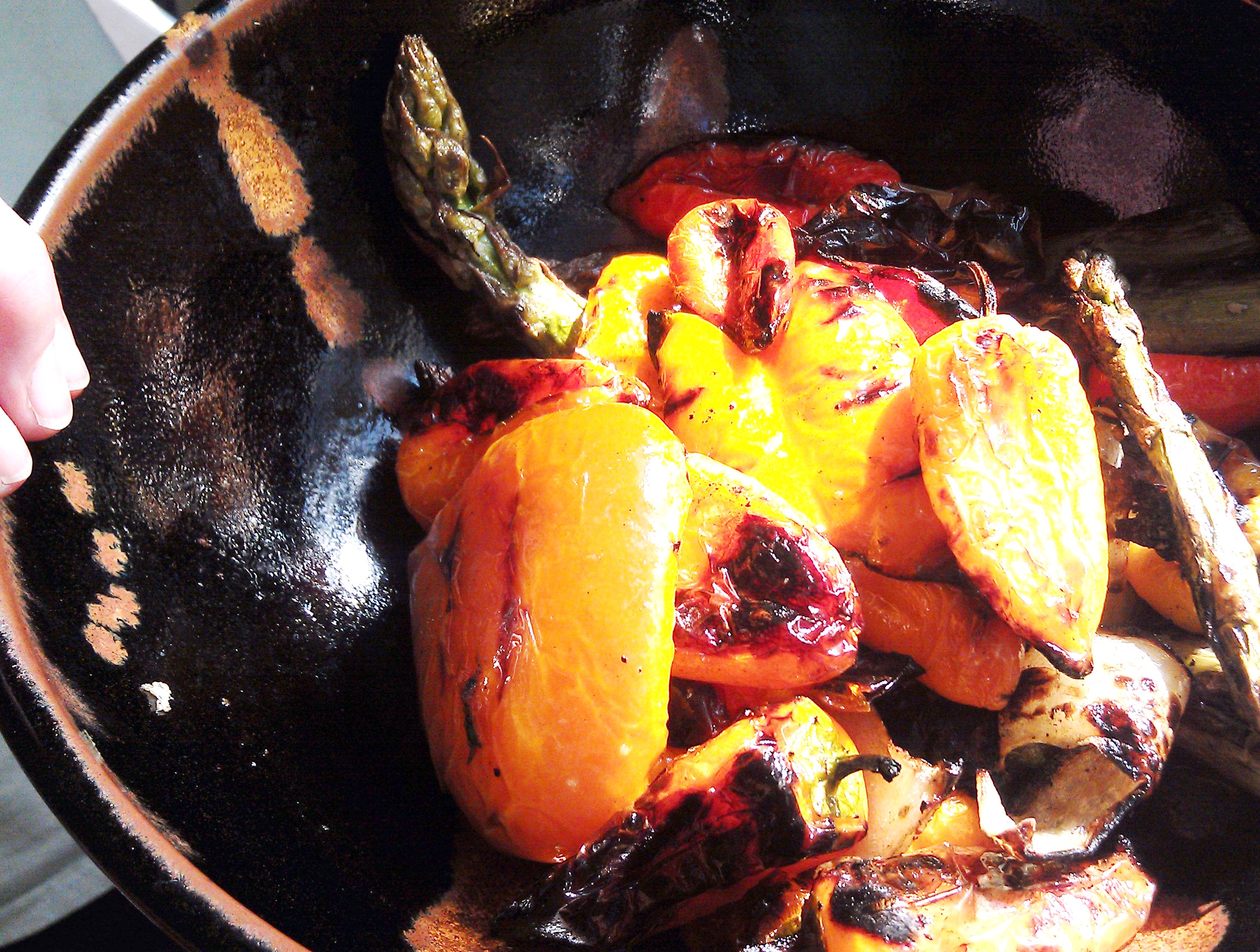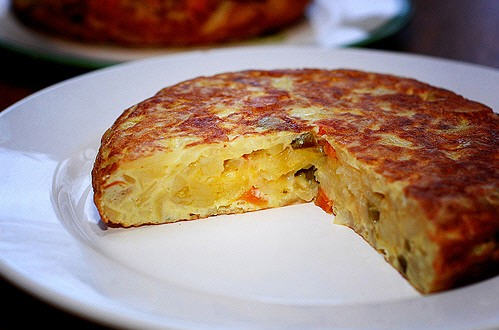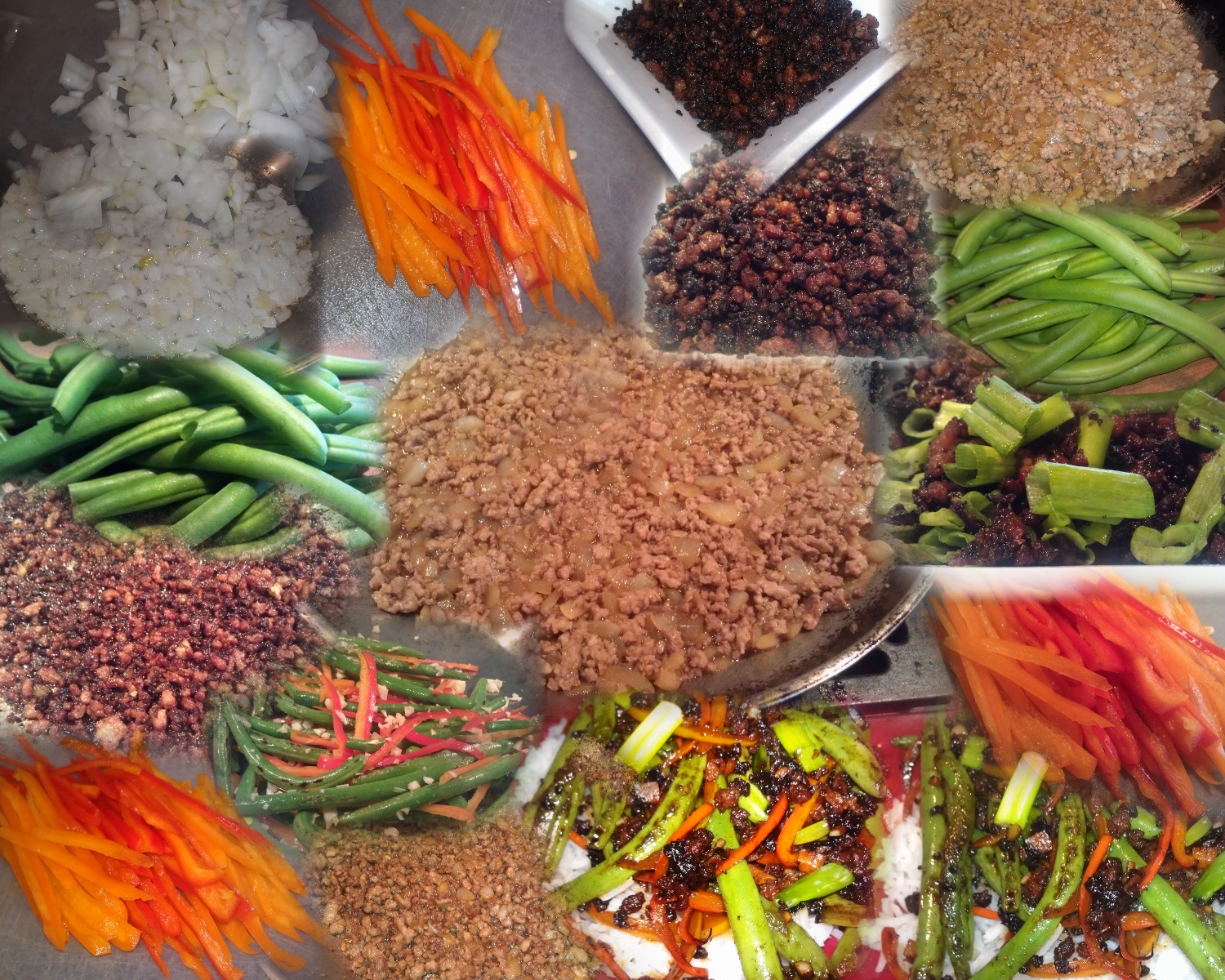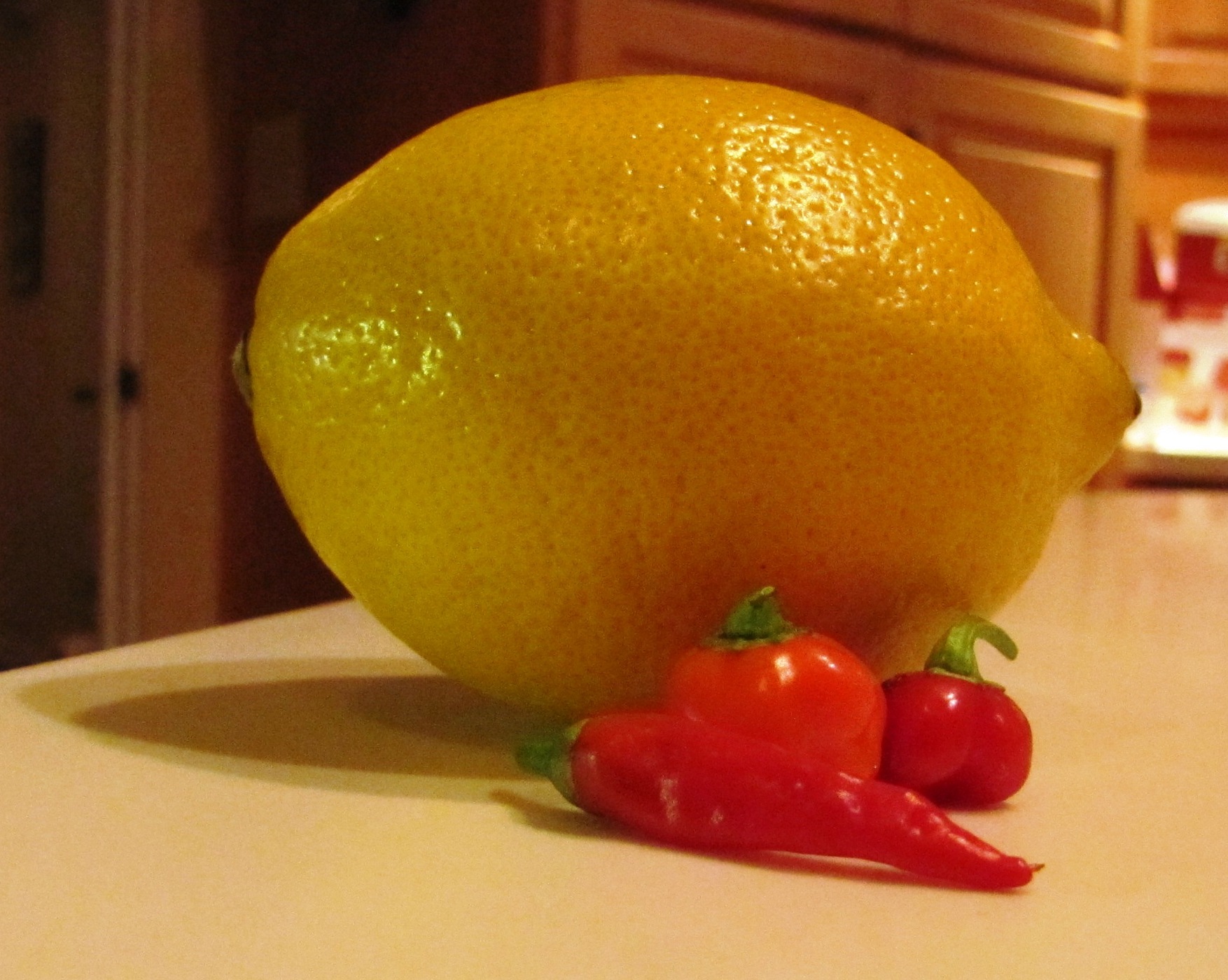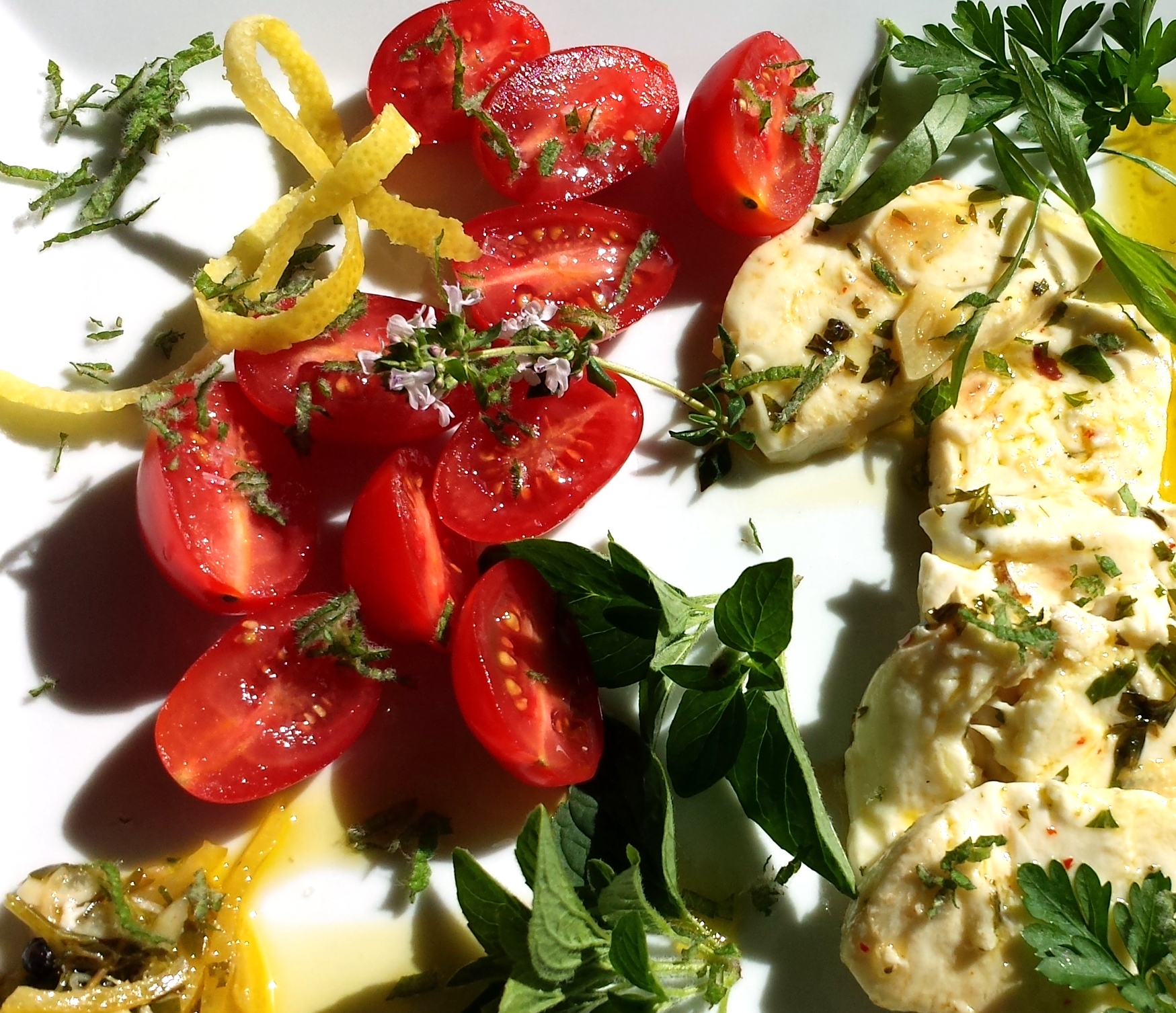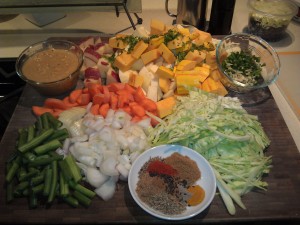 I love stews! There’s something magical about tossing a bunch of stuff in a pot and simmering it for a while until it’s done. Bonus! Most stews taste wonderfully better on the following day, after the flavors have had a chance to marry more thoroughly, making them perfect for long-range eating.
I love stews! There’s something magical about tossing a bunch of stuff in a pot and simmering it for a while until it’s done. Bonus! Most stews taste wonderfully better on the following day, after the flavors have had a chance to marry more thoroughly, making them perfect for long-range eating.
The wonderful New Yorker writer Adam Gopnik in his “The Table Comes First” notes that the cookery for essentially all dishes can be divided into three parts. I learned this by listening to Bonney talk about the book as I cooked the stew, which I realized was indeed a three-parter! I’ll talk about the three parts in the “Method” section of this post.
One other important feature of stew is that it’s an “anything you like” kind of dish. Once you have the flavor profile in mind, there’s a wealth of good stuff you can just chuck in there, which is really great when you’re scrounging around the fridge for leftovers and coming up short-handed and people are looking at you with that look that says “Weren’t you going to make dinner tonight!?? And where is it??”
These are people who at the moment are uninterested in talking about the wonders of stew, the fact that virtually every culture on Earth has its own version of stew from ground nut to hot pot, from boeuf bourgignon to etouffe (here’s a beautiful list: http://en.wikipedia.org/wiki/List_of_stews).
They are mostly interested in eating stew. Right away.
To help you deal with those people, this particular stew is entirely easy to make. The ingredients list is long-ish, but it’s mostly spices. It’s all made in a single pot (Yes!!), it goes together fast and, with a bit of rice and perhaps some orange segments (a traditional W. African accompaniment) it’s not only a complete meal, it’s a completely delicious meal.
Ingredients for quite a lot of stew (will easily serve 6 hungry people)
- 1/2 C. peanut butter. I used chunk. Please! Use peanut butter that is made entirely and exclusively from peanuts. Most versions of peanut butter have a veritable devil’s cauldron of “ingredients”. You just need the peanuts.
- 1 good sized Yukon gold or red or white potato, peeled slightly, cut into 3/4″ chunks
- 1 large sweet potato, peeled and cut into 3/4-1″ chunks
- 1 delicata squash (or any squash with an edible skin), cored, seeded, cut into 3/4″ chunks. Are you seeing a 3/4″ theme here?
- 1 large shallot or 1/2 large onion, chopped, medium dice
- 4-8 garlic cloves (I used. . .wait for it. . .8), fine dice
- 1 large carrot cut lengthwise in half, then across the bias into moderately thickish coins (3/8″ if you want to get picky, I usually don’t, but it’s a good idea to cut things a little thicker for stews so they’ll hold up to the longer cooking times)
- 3/4 C. coconut milk
- 1 C. very hot water (add a little more water as the stew simmers if it appears too thick or dry)
- 1 14 oz. can good quality chopped tomato in juice or, in season, a cup and a half of seeded, chopped tomatoes, including any liquids from the tomatoes.
- About 1/3rd small head green cabbage, julienned. Core the cabbage, cut it into quarters lengthwise, put one quarter on your cutting board and cut very thin slices straight down to julienne.
- 6 oz. fresh green beans, tailed and cut into approx. 2″ sections
- 1-1/2 tsp. cumin seeds, 1 tsp. ground cumin
- 1-1/2 tsp. ground cinnamon
- 1/2 tsp. ground turmeric
- 1 tsp. ground cardamom, plus several whole pods (pods are optional)
- 1-1/2 tsp. ground coriander
- About 1-1/2 TB. minced fresh ginger
- 1-1/2 TB. medium brown sugar
- 1 TB. real cocoa powder (I used Hershey’s – not a mix, just plain, unadultered cocoa powder)
- 1-2 hot peppers, seeded, with inner ribs removed (or not, if you like your stews hotter), fine dice
- 1 TB. red wine vinegar or palm vinegar or apple cider vinegar
- Juice of 1 juicy lime.
- 1 tsp. sea salt + additional salt to taste (I used about 1-1/2 tsp. salt, your mileage may vary. The idea is to add a tsp. of salt early on in the dish, keep tasting it as it cooks, then, towards the end, taste it and decide if you should add a bit more salt.
Method (here’s where Gopnik’s “Three Steps” come in!)
Step One: saute’ onion, garlic, ginger and other aromatics
- Over medium heat, heat a pot large enough to comfortably hold all the ingredients. When the pot is hot, add 2-3 turns of olive oil. Swirl the olive oil until its hot (a little piece of onion dropped into the oil will immediately begin to sizzle and beg for its life)
- Add onions, chili and ginger, saute for 3-4 minutes. Add garlic, saute for another minute or two.
- Add all other spices, whole and ground, (except cardamom pods, which you’ll add to the stew in Step Three) and saute for another minute or two, stirring consistently to avoid burning.
Step Two: Add the stewing liquids and scrape up the tasty bits
- Add the hot water and stir in, scraping the bottom of the pot to get all the tasty near-carbonized / caramelized bits up.
- Add the coconut milk, peanut butter, vinegar and tomatoes. Stir occasionally until the liquid begins to simmer.
Step Three: Add The Other Stuff and Cook Until It’s Done (Total Simmering Time, about 20-25 min, this is a great time to start the rice cooking!)
- Add the cut up potato, sweet potato and squash and mix gently until the liquid comes about to the top. Keep heat at medium-med-high until liquid begins to bubble vigorously, then reduce heat to a simmer. Simmer for 10-15 minutes (until veggies are just starting to soften).
- Add cabbage, simmer for a few more minutes
- Add the green beans, simmer for a few more minutes.
OK, now taste and correct seasonings. Add the lime juice and stir it in. At this point the stew should be fairly thick, but not dry. If it has too much liquid, raise the heat and cook, uncovered, stirring, for another couple of minutes. If too dry, add a small amount of hot water.
Want more protein?: The peanut butter provides a good amount (about 30g of high quality protein), but you can add about 3/4 C. cooked red or pinto beans to this stew about halfway through the simmer.
To serve: Mound a serving of rice in a large bowl, add a couple of large spoonsful of stew to the side or on top of the rice.
Serve with: In W. African cuisine, ground nut stews like this are often served with mangos or citrus. I served this with segmented, peeled orange “supremes” (use a sharp knife to remove all the rind, pith and skin – here’s a wonderful, illustrated example of a great way to do this from the nice peeps at VeganYumYum (http://veganyumyum.com/2007/01/making-pretty-orange-segments/).



